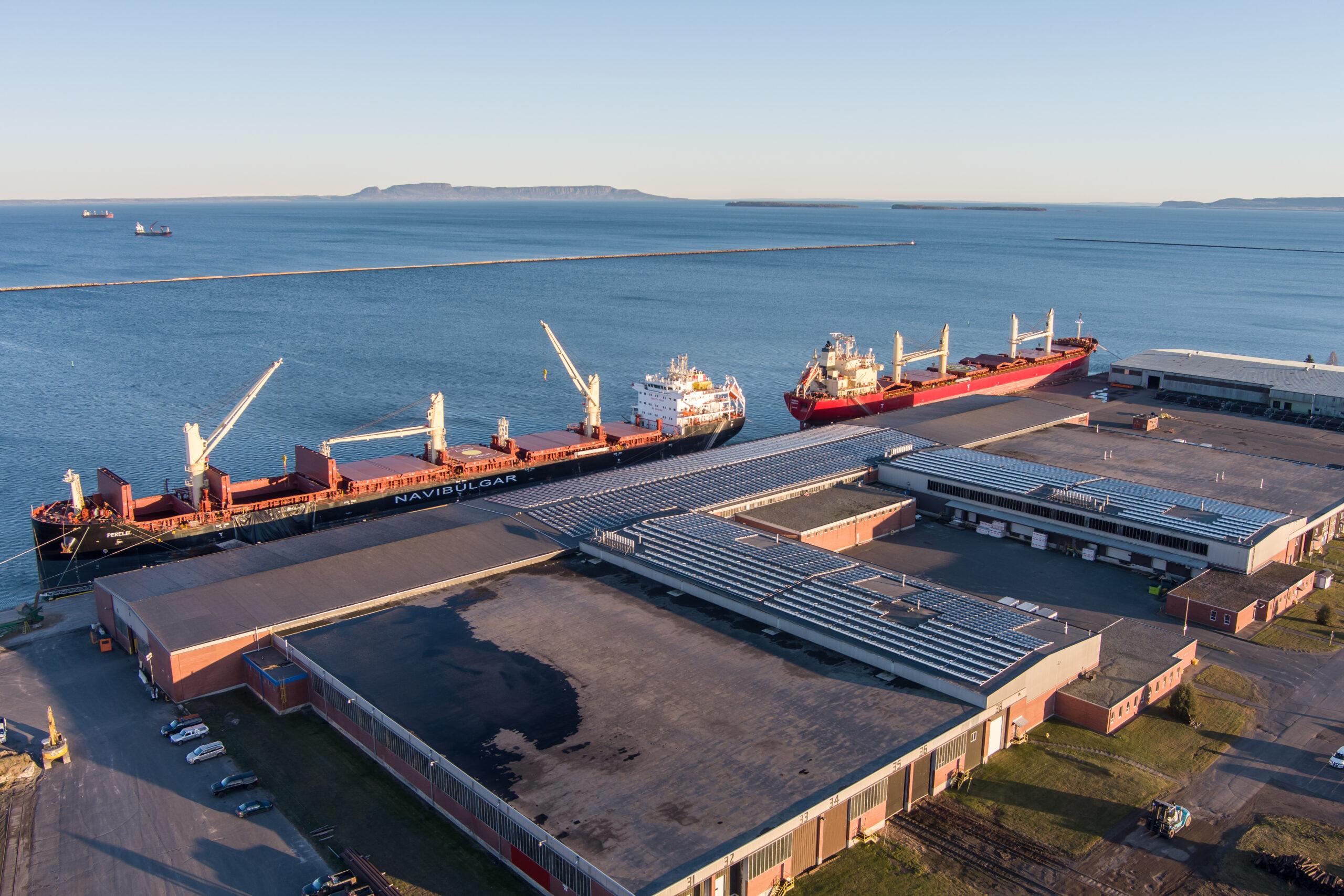
Canada’s strategic Great Lakes port on the tip of Lake Superior has emerged in recent years as a rather unique success story. It is significantly diversifying not only its core grain and commodity exports but developing a major niche in inbound project cargo for wind farm and mining developments in the Canadian Prairies. Chris Heikkinen, who took over the helm of the Thunder Bay Port Authority last year, shared his views on a wide range of subjects, including market opportunities, climate change’s evolution favouring an extension of the St. Lawrence Seaway season, and a capital infrastructure plan to consolidate a bright future.

As the furthest inland port in the country, our customers are shipping product through a very long east-west supply chain. It is the route that defines our customer base – what commodities work in scale, and to which markets?
Grain exports have been the backbone of the port since its inception; the port was created to open access to eastern markets for Western Canadian grain. Canadian grain is a strong product, and harvests have been on an upward trend for years.
Production of potash in Saskatchewan is trending in the same direction. There have been issues in other supply chains during the past few years, leading to an influx of potash shipments at Thunder Bay. In 2023, dry bulk terminals in Thunder Bay handled four times the average volume of potash. This is a great story showcasing the agility of the Seaway supply chain. We have considerable unutilized capacity which shippers can take advantage of in a pinch. With global supply of potash constrained in part due to the RussiaUkraine conflict, this available capacity and service has been vital in getting Canadian potash to market.
Project cargo moving through Thunder Bay is primarily travelling westward inbound from Europe with final destinations in the Canadian Prairies. We’ve grown this cargo steadily over the past decade with our focus on customer service. Shippers that generate value out of our competitive advantages: routing, world-class facilities, and service; include those moving steel products, windmill infrastructure, and other dimensional cargoes. 2023 was our best year to date in terms of project cargo and breakbulk, and we now have several cargo customers committed to regular service at our port, which is a big win for us.
I am a fan of any extension to the Seaway season. We are pleased with the collaborative nature of the Seaway corporations to test the lock operation extensions. Our shipping season has lengthened considerably since the opening of the Seaway in 1959. If warmer winters continue, there’s a strong argument to explore the viability of even longer shipping seasons.
Grain moving through Thunder Bay is carried primarily to destinations in Europe, the Middle East, Africa, and Latin America. Africa is an interesting market to watch for grain because that continent is expected to continue experiencing significant population growth, and urbanization, for the next several decades.
Wind turbine blade shipments have been an important part of our project cargo business. Our road and rail connections and significant laydown space mean that cargo can be staged and delivered to site as needed. There continues to be many inquiries for wind components for the next few years. The turbines themselves trend larger almost every year. We’re building new laydown space to accommodate bigger blades in 2025. It bodes well that we’ve got unencumbered land for expansion.
Mining in Northern Ontario is an emerging opportunity. We have tapped into mine development over the past 10 years, handling shipments of heavy equipment and infrastructure components.
Growth and diversity of cargo are our main goals. Increasing cargo volumes and tapping into new cargo opportunities supports job creation and economic stability. There is a lot of opportunity in our catchment area, both in Western Canada and here in Northern Ontario. It is incumbent upon us to ensure the port is well equipped to capitalize on emerging cargo opportunities.
We are undertaking a large rail upgrade project. We have significant rail infrastructure, and utilization rates have increased with cargo volumes. We’re installing stronger rail to meet the demands of the cargo. Our five-year capital infrastructure plan exceeds $15 million dollars. As our cargo operations scale up, we are investing in robust assets that will serve sustainable growth into the future.
Sustainability is more than an objective or a project on the side of one’s desk these days. It is part of the way we do business. We are proud that every tonne of cargo moving through our port is utilizing the marine mode of shipping to its greatest extent: to or from the middle of the continent. Our efforts to attract cargo through the Seaway are part of the solution. But more than this, we must look at all of our activities through what we call a green lens. How might an initiative impact the environment? Are there more environmentally friendly alternatives? In terms of infrastructure, considering future climate scenarios and designing our developments accordingly.
Employee health and safety are integral to day-to-day operations and long-term success. And part of employee safety is committing as best we can, to contributing to the sustainability of our planet.
We are expecting growth in cruise traffic in 2024 and beyond. The cruise ships, bringing foreigners to our corner of the world known for its rugged beauty, also enliven the local community members. It is great to see this form of tourism that Thunder Bay hadn’t seen for a decade. The City of Thunder Bay has led this venture with their Pool Six Cruise Terminal, and their success is admirable.
